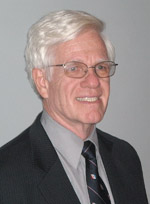Tactical Ground Communications Offer Both Promise and Peril
 |
Networking on the move is the wave of the future in the complex physical environments where ground forces operate. Such environments may be urban or rural, broad- maneuver battlefields or terrain around forward operating bases. As communications shift from circuit-switched to packet-switched, line-of-sight connections with one radio in a network can provide connectivity to all radios in a cluster. Unified capabilities—voice, video and data—along with more classified information are moving closer to the tactical edge. Future systems will be modular; reconfigurable to meet the changing needs of mission, enemy, troops, terrain and time (METT-T); and scalable to task and purpose. Future radios will be upgradeable as technology advances. And, radios increasingly will be agile enough to adapt spectrum use to local circumstances.
So what’s not to like? Consider a few important challenges: weight and power, spectrum availability, satellite access, coalition interoperability and balancing the cost and capabilities of software-defined radios to user needs.
Weight and power are major challenges. The most disadvantaged node in a tactical network is the combat infantryman. On a typical three-day deployment, a soldier will carry up to 65 batteries weighing a total of 30 to 35 pounds. Repeated feedback from combat units highlights the negative impact of soldier load, but improvements are slow in coming. In light combat units, every watt consumed by a soldier’s radio has to be carried, either as disposable batteries or as rechargeable batteries with the associated fuel and generation requirements. Designers need to understand that solutions in the field will be accepted or rejected based on criteria such as watts per pound and pounds per mission-hour. Future systems may bring improvements, but new batteries should be made more compatible with legacy radios.
Spectrum ties all elements of tactical combat power together. In the past few years, soldiers have become especially aware of spectrum issues, just as spectrum finally is being recognized as a core constraint across all aspects of military operations. Future demands for telemedicine and three-dimensional visualization will only compound the problem. The soldier, as a platform, is disadvantaged from a communications point of view. Antennas are small, and they have issues with low gain, suboptimum orientation, poor elevation, poor ground plane and body masking, for example. Radiation safety issues and soldier load limits dictate low radiated power levels. Across a wide range of environments, soldiers must be able to penetrate all types of foliage, follow terrain and assume fighting positions at or below ground level. Collectively, these tasks show the importance to soldiers of the most desirable—and congested—spectrum in the 30-300 megahertz bands. Dynamic Spectrum Allocation technology may offer major improvements; but this approach will need buy-in from all spectrum holders, or the pool of frequencies won’t be large enough. Satellite phones can reduce both dependence on tactical spectrum and vulnerability to terrain masking, as the popularity of Iridium handsets in
The terms software defined radios (SDRs) and software communications architecture (SCA) often are considered synonymous. SDRs are indisputably valuable, making possible many advances in radio performance and weight reduction. But there are trade-offs between lightweight, single-purpose systems such as the 22-ounce, 5-watt Enhanced Position Reporting Locating System (EPLRS) radio, built around a single field programmable gate array (FPGA), and more versatile, but also heavier, more expensive and more power-intensive SCA approaches such as the Joint Tactical Radio System (JTRS). SCA alone could be the subject of many columns, but a mix of systems and architectures seems appropriate. In some cases, single-purpose radios may be good enough.
Coalition interoperability will grow more and more important. SDR/SCA radios can make important contributions, even though issues such as transnational waveform portability need to be solved. The Defense Advanced Research Projects Agency’s Mobile Ad Hoc Interoperability Network Gateway (MAINGATE) program (SIGNAL Magazine, November 2009, page 25) has shown promising results in heterogeneous interoperability and networking, but the radios are expensive.
Industry has many opportunities. It can develop next generation satellite phones; emphasize radios incorporating coalition interoperability—such as lower-cost versions of MAINGATE and less bulky versions of the Secure Mobile Equipment-Portable Electronic Device (SME-PED), which can handle multiple crypto suites; reduce soldier load through innovative power sources; and take advantage of the extraordinary progress in commercial form factors and iPhone-type applications. The U.S. Marine Corps secure cellular experiment may offer promise.
In all cases, it is important to remember the pace of change. If computing power per unit cost is doubling roughly every 18 months, then 15 years will encompass 10 doublings. The value of 210 is 1,024, meaning that there will be a more than 100,000 percent performance change in key areas in this time frame. Don’t even think about linear projections—be bold!
Linton Wells II is the Transformation Chair and a distinguished research professor at the




Comments